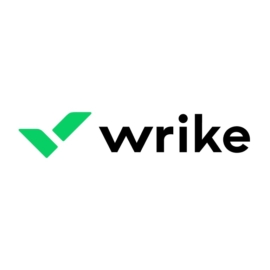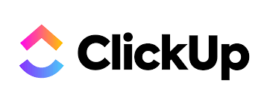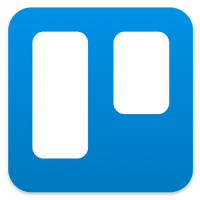-
Wrike: Best for project collaboration
-
ClickUp: Best for small teams and independent workers
-
Asana: Best for multifaceted projects
-
Trello: Best for small projects
-
Hive: Best for analytics
-
Basecamp: Best for large teams
monday work management is one of the leading project management and collaboration tools; however, it’s not for everyone. There are several alternatives to monday work management, but choosing the right application for your business can be challenging. We can help you narrow your search. On this page, we have shared the six best monday work management alternatives for 2023.
For a quick review, you can check out our comparison table. Or, if you want more details, we have information on the alternative solutions’ pros, cons, pricing and top features, as well as our methodology and tips for choosing the best monday work management alternative.
Jump to:
- Top 6 monday.com competitors and alternatives: Comparison table
- Top 6 Monday competitors
- Is monday.com worth it?
- monday.com pros and cons
- monday.com pricing
- Do you need an alternative to monday.com?
- Review methodology
Top 6 Monday competitors and alternatives: Comparison
In this comparison table, we have compared the core features of the six best monday work management alternatives for 2023.
| Software | Best for | Native time tracking | Kanban boards | 24/7 customer support | Mobile app | Starting price |
|---|---|---|---|---|---|---|
| monday work management | Complex projects | Yes | Yes | Yes | Yes | $8 per user per month |
| Wrike | Project collaboration | Yes | Yes | Yes | Yes | $9.80 per user per month |
| ClickUp | Small teams and independent workers | Yes | Yes | Yes | Yes | $5 per user per month |
| Asana | Multifaceted projects | Yes | Yes | Yes | Yes | $10.99 per user per user per month |
| Trello | Small projects and affordability | No | Yes | No | Yes | $5 per user per month |
| Hive | Analytics | Yes | Yes | Yes | Yes | $12 per user per month |
| Basecamp | Large teams | No | Yes (Kanban is called Card in Basecamp) | Yes | Yes | $15 per user per month |
Featured partners
Wrike: Best for project collaboration

Wrike is a work management and collaboration application. It can transform how teams work by providing cross-departmental visibility, control and collaboration. It offers everything needed to complete a project in one spot, including automation tools to help reduce redundant or repetitive tasks. Wrike can be used for project management, IT, marketing, professional services and other business functions.
Pricing
- Free plan: $0 for unlimited users.
- Team: $9.80 per user per month.
- Business: $24.80 per user per month.
- Enterprise: Custom quote.
- Pinnacle: Custom quote.
Wrike features
- Wrike analytics: Wrike offers plenty of useful marketing insights, such as performance metrics from marketing campaigns and reporting features.
- Wrike lock: With the Wrike Lock feature, you get an additional layer of encryption to keep workplace data safe.
- AI project risk prediction: This feature provides a way to predict any hurdles that threaten project deadlines.
Pros
- Unlimited users in the Free plan.
- Desktop-optimized version.
- Outstanding customer support.
Cons
- The user interface is confusing to navigate.
- Customization tools are lacking.
For more information, read the full Wrike review.
ClickUp: Best for small teams and independent workers

ClickUp offers an excellent balance between functionality and user-friendliness. Although the user interface could be clearer, once you get used to it, it flows more smoothly. The standout features of ClickUp include its advanced reporting tools and customization capabilities. You also get excellent visibility into projects through multiple views.
Pricing
- Free Forever: No cost.
- Unlimited: $5 per user per month, billed annually, or $9 per user billed monthly.
- Business: $12 per user per month, billed annually, or $19 per user billed monthly.
- Business Plus: $19 per user per month, billed annually, or $29 per user billed monthly.
- Enterprise: Custom pricing.
Clickup features
- Advanced reporting tools: With ClickUp, you can easily create and customize reports for budgets, team performance and project progress based on real-time data.
- Customization tools: Customization tools allow you to personalize the user experience. This includes customization of workflow, appearance and views.
Pros
- Excellent customization capabilities.
- Multiple views.
- Advanced reporting capabilities.
Cons
- The user interface feels clunky.
- Time tracking tools are only available in the Business pricing tier and higher.
For more information, read the full ClickUp review.
Asana: Best for multifaceted projects

The simplicity of its design and functionality is the unique selling point for Asana. It relies on a kanban-style design to make it easy to use, and the onboarding process is streamlined for quick and easy setup. While Asana is an excellent choice for businesses that prefer simplicity, it lacks native time tracking tools, and advanced security features are only available in the Enterprise tier.
SEE: Asana vs monday work management: Head-to-head comparison (TechRepublic)
Pricing
- Basic: Free.
- Premium: $10.99 per user per month, billed annually, or $13.49 per user billed monthly.
- Business: $24.99 per user per month, billed annually, or $30.49 per user billed monthly.
- Enterprise: Custom pricing.
Asana features
- Smart layout: Asana’s intuitive user interface makes it easy for beginners to understand. You also get to personalize the user interface. For example, you could hide the navigation bar or make other changes to the dashboard’s appearance.
- Powerful integrations: Asana can integrate with several third-party applications to centralize your work management. It integrates with Power BI, Salesforce, Slack, Zapier, Tableau and more.
Pros
- Agile support.
- Several advanced tools offered with the free plan, including automation.
- Detailed reports on project status.
Cons
- Time tracking tools are lacking.
- Security features are only available in the Enterprise version.
For more information, read the full Asana review.
Trello: Best for small projects

Trello is a simple project management software solution that helps organize and track work. Packaged as web-based software, it is optimized for use with an internet browser, making coordination between internal and external users easy. Moreover, the drag-and-drop kanban user interface makes it easy to quickly visualize project progress.
The excellent free plan and general ease of use make Trello one of the best free alternatives to monday work management.
Pricing
- Free: No cost.
- Standard: $5 per user per month, billed annually, or $6 per user billed monthly.
- Premium: $10 per user per month, billed annually, or $12.50 per user billed monthly.
- Enterprise: Starts at $17.50 per user per month for a team of 50 to 250 users.
Trello features
- Butler automation: The most talked-about feature of Trello is Butler, a built-in automation tool. With Butler, users can automate the processes of sending notifications, moving cards from one list to another and getting due date alerts.
- Add-ons: Trello Power-Ups, or add-ons, allow users to extend Trello’s functionality with extra features and integrations.
Pros
- Ease of use.
- Generous workflow automation tools.
- Flexible and customizable features.
Cons
- Several advanced features require add-ons.
- Trello is not ideal for complex projects.
- Reporting tools are limited.
See how Trello and monday work management compare.
Hive: Best for analytics

Hive is one of the more recent project management software tools on the market; however, it has quickly positioned itself as a worthy alternative to monday work management. Hive offers custom workflows, a built-in messaging tool and analytics, using AI and other tools to assist in goal setting and automation. There are over nine project views, including lists, calendars and kanban boards, allowing users to pick whatever feels most natural to them.
Pricing
- Free: $0 for up to two users.
- Teams: $12 per user per month, billed annually, or $18 per user billed monthly.
- Enterprise: Custom pricing.
Hive features
- Time tracking: Hive’s time tracking tools offer excellent functionality, with abilities to track time spent on each task within projects or get time estimates on future deliverables.
- Goal-setting: There is no need for a separate app to set up company goals. Hive allows you to set goals linked to results within the platform. For example, you can view project completion percentage, key insights and what’s overdue.
Pros
- Detailed project planning.
- Native messaging app.
- Plenty of add-ons available.
Cons
- Integrations are limited.
- Automation tools are not available in the free version.
Basecamp: Best for large teams

Basecamp is based on an “everything in one place” philosophy, which is evident in its layout. As a result, the user interface is simple and intuitive. Its top features include a group chat tool, to-do lists, automatic check-ins for quick updates on tasks and several other tools. It also has a built-in documents, file storage and sharing tool, so users don’t have to rely on third-party apps.
Pricing
- Basecamp: $15 per user per month.
- Basecamp Pro Unlimited: $299 per month, billed annually.
Basecamp features
- Campfire: This is Basecamp’s chatting feature, which is separate from its message board tool. The chatting tools allow users to comment, ask questions and share informal information with their on-site and remote teammates.
- Basecamp reports: Using Basecamp, users can generate different types of reports related to task and project progress and user activity.
Pros
- Excellent visual representation of projects.
- Syncing calendars, which is quick and easy.
- Free access for students and teachers.
Cons
- Lacks tasks priority capability.
- Lacks a free plan for business.
For more information, read the full Basecamp review.
Is monday.com worth it?
monday work management is worth it for businesses looking for a versatile project management solution that offers good value for money. It ranks as one of the best project management software due to its user-friendly interface, visual project management capabilities, extensive customization options and ability to serve the needs of teams of all technical levels across various industries.
Before deciding if monday work management is worth it for your particular situation, consider factors such as the size and nature of your team, the complexity of your projects, the level of customization required and your budget.
You may consider other monday work management alternatives if you’re looking for niche-specific project management software, features specific to your project or if your budget is particularly tight.
monday.com pros and cons
| Pros | Cons |
|---|---|
| Solid mobile apps for iOS and Androids devices | Must have a Pro account for time tracking |
| Modern and easy-to-navigate user interface | Per-user pricing limits make it costly for small businesses |
| Over 200 templates for creating boards and automation | The Basic plan lacks essential project management features |
| Excellent customer support | Free Forever and Basic plan users, activity log tracking is limited to one week |
| Multiple views options, including Kanban, Gantt, map, calendar, chart and timeline views | |
| Free Forever plan for up to two users |
monday.com pricing
monday work management serves the needs of various categories of businesses, from individuals and startups to small and mid-sized businesses to large enterprises. monday work management tiered pricing plans make choosing a plan that offers the features you need easy.
Free forever
This plan is available for up to two users at no cost. It’s ideal for individuals, freelancers and one-employee businesses looking to keep track of their work. Although this plan is limited when it comes to features, you can still get started with it and upgrade as your needs increase. The following are the key features of the free forever plan.
- Up to one-week activity log.
- 500MB file storage.
- Maximum of two users.
- Support of over 200 templates.
- Unlimited docs.
- Up to three boards.
Basic
Companies looking for a centralized platform to manage all their teams’ work may find the monday work management Basic plan beneficial. It costs $8 per user per month when billed annually and $10 per user per month when billed monthly. This plan offers similar features to the free forever plan but stands out with additional features, such as unlimited users, 5GB file storage, unlimited items and unlimited boards and viewers.
Standard
Fast-growing businesses that need extra storage and automation capabilities may be interested in the monday work management Standard plan. It costs $10 per user per month when billed annually and $12 per user per month when billed monthly. This plan stands out with features like timeline, Gantt and calendar views. It offers up to 250 automation and integration actions per month, shows up to six months of activity logs and allows users to combine up to five boards per dashboard. Unlike other lower plans, the Standard plan offers native integrations with Zoom.
Pro
At $16 per user per month when billed annually and $20 per user per month when billed monthly, the monday work management Pro plan is suitable for organizations with high-maturity processes and complex workflows. With this plan, you can perform up to 25,000 automation and integration actions per month. The Pro plan also offers time tracking capabilities which help you track and monitor the time spent on tasks. The Pro plan also provides up to 100GB of file storage and one-year activitiy logs.
Enterprise
Organizations with complex business processes and a large user base may find the monday work management Enterprise plan useful. It’s billed based on the number of users and offers multiple customization options, priority support and 250,000 monthly automation and integration actions. This plan also provides users advanced analytics, up to 1000GB of file storage and five-year activity logs. The cost of the monday work management Enterprise plan may vary depending on the organization’s requirements and the total number of users.
Do you need an alternative to Monday?
Although monday work management is a versatile project management, it may not appeal to all categories of users.
For budget-conscious companies, Trello and ClickUp combine quality service with affordability. If you are looking for highly collaborative project management software, Hive, Wrike and Basecamp may be beneficial to you. Asana is one of the best project management software for Agile teams.
Each organization’s needs are unique, and whether or not you require a monday work management alternative depends on your specific project management goals, user skill level, budget and preference.
Methodology
We analyzed several parameters to choose the best monday work management alternatives for 2023. This includes pricing, user interface, ease of getting started and customer support. Each parameter was evaluated based on customer testimonials, expert opinions and hands-on experience. In addition, we analyzed the software for core features, such as time tracking and kanban boards, as well as advanced features, such as analytics and reporting.











